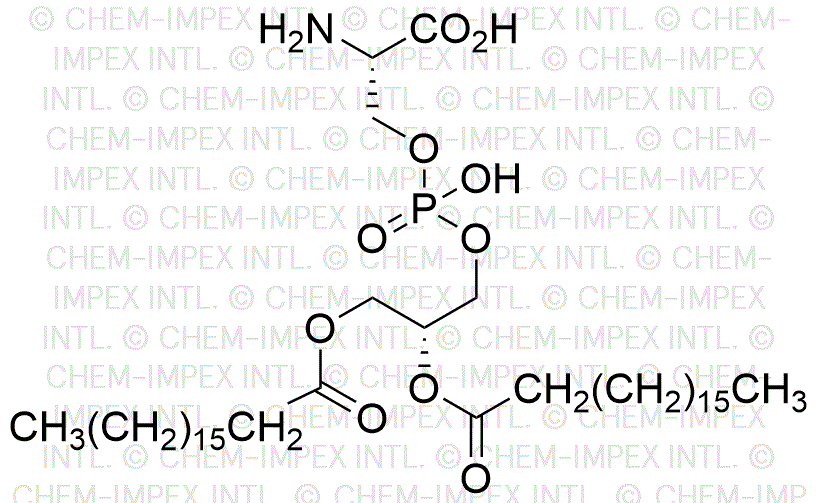L-a-Phosphatidyl-L-serine is widely utilized in research focused on:
- Neuroscience: This compound plays a critical role in brain health and function. It is often studied for its potential to enhance cognitive performance and memory, making it valuable in research related to neurodegenerative diseases.
- Sports Nutrition: Athletes and fitness enthusiasts use it to improve exercise performance and recovery. Research indicates that it may help reduce exercise-induced stress and fatigue, making it a popular supplement in the sports industry.
- Pharmaceuticals: It is explored for its therapeutic potential in treating conditions like anxiety and depression. Its ability to support neuronal health positions it as a candidate for drug development in mental health treatments.
- Cell Biology: In laboratory settings, it is used to study cell membrane dynamics and signaling pathways. Its unique properties facilitate research in cellular processes, particularly in understanding apoptosis and cell survival.
- Dietary Supplements: The compound is included in various dietary supplements aimed at improving cognitive function and overall brain health. Its natural origin and safety profile make it an attractive option for consumers seeking mental clarity.
General Information
Properties
Safety and Regulations
Applications
L-a-Phosphatidyl-L-serine is widely utilized in research focused on:
- Neuroscience: This compound plays a critical role in brain health and function. It is often studied for its potential to enhance cognitive performance and memory, making it valuable in research related to neurodegenerative diseases.
- Sports Nutrition: Athletes and fitness enthusiasts use it to improve exercise performance and recovery. Research indicates that it may help reduce exercise-induced stress and fatigue, making it a popular supplement in the sports industry.
- Pharmaceuticals: It is explored for its therapeutic potential in treating conditions like anxiety and depression. Its ability to support neuronal health positions it as a candidate for drug development in mental health treatments.
- Cell Biology: In laboratory settings, it is used to study cell membrane dynamics and signaling pathways. Its unique properties facilitate research in cellular processes, particularly in understanding apoptosis and cell survival.
- Dietary Supplements: The compound is included in various dietary supplements aimed at improving cognitive function and overall brain health. Its natural origin and safety profile make it an attractive option for consumers seeking mental clarity.
Documents
Safety Data Sheets (SDS)
The SDS provides comprehensive safety information on handling, storage, and disposal of the product.
Product Specification (PS)
The PS provides a comprehensive breakdown of the product’s properties, including chemical composition, physical state, purity, and storage requirements. It also details acceptable quality ranges and the product's intended applications.
Certificates of Analysis (COA)
Search for Certificates of Analysis (COA) by entering the products Lot Number. Lot and Batch Numbers can be found on a product’s label following the words ‘Lot’ or ‘Batch’.
*Catalog Number
*Lot Number
Certificates Of Origin (COO)
This COO confirms the country where the product was manufactured, and also details the materials and components used in it and whether it is derived from natural, synthetic, or other specific sources. This certificate may be required for customs, trade, and regulatory compliance.
*Catalog Number
*Lot Number
Safety Data Sheets (SDS)
The SDS provides comprehensive safety information on handling, storage, and disposal of the product.
DownloadProduct Specification (PS)
The PS provides a comprehensive breakdown of the product’s properties, including chemical composition, physical state, purity, and storage requirements. It also details acceptable quality ranges and the product's intended applications.
DownloadCertificates of Analysis (COA)
Search for Certificates of Analysis (COA) by entering the products Lot Number. Lot and Batch Numbers can be found on a product’s label following the words ‘Lot’ or ‘Batch’.
*Catalog Number
*Lot Number
Certificates Of Origin (COO)
This COO confirms the country where the product was manufactured, and also details the materials and components used in it and whether it is derived from natural, synthetic, or other specific sources. This certificate may be required for customs, trade, and regulatory compliance.


